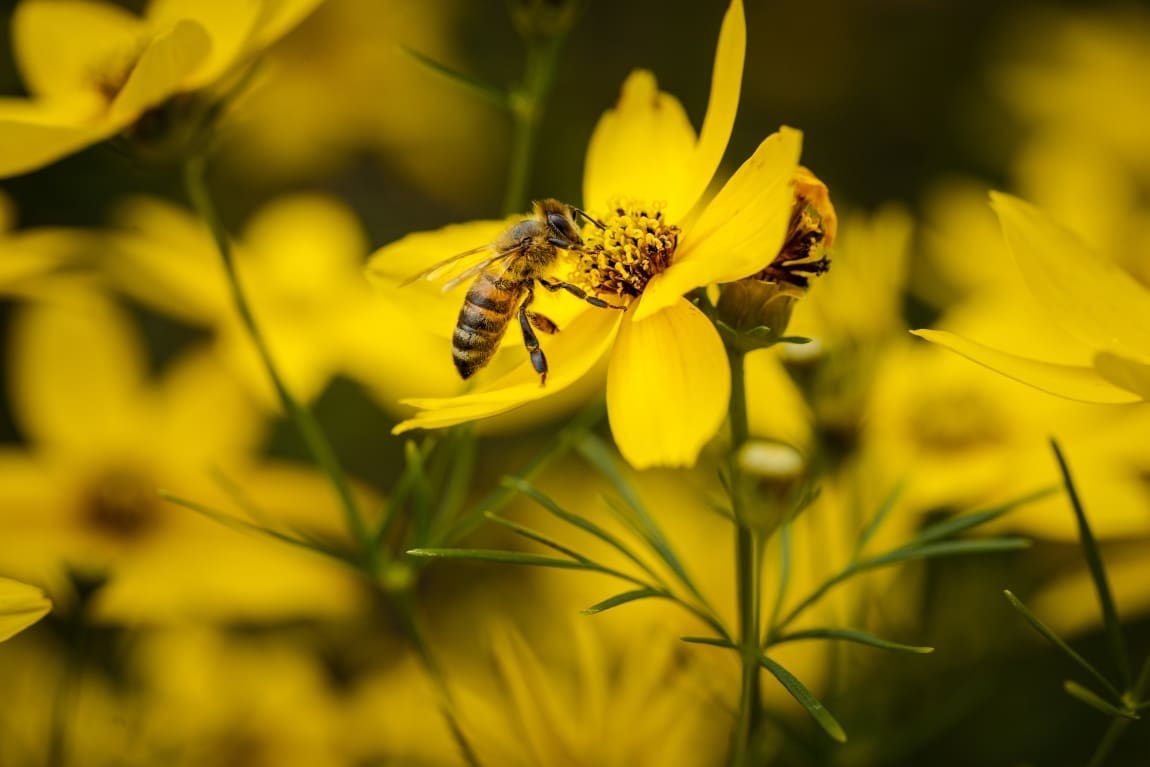By Wayne Coles
A paper published in the CABI Reviews journal has found that climate change is the most prominent threat to pollinators – such as bumblebees, wasps, and butterflies – who are essential for biodiversity conservation, crop yields and food security.
The research, which is entitled ‘What are the main reasons for the world-wide decline in pollinator populations?’, suggests that the threat to pollinators posed by humans is the most difficult threat to control.
Pollinator populations are declining worldwide and 85% of flowering plant species and 87 of the leading global crops rely on pollinators for seed production. The decline of pollinators seriously impacts biodiversity conservation, reduces crop yield, and threatens food security.
Risk of extinction
According to The Intergovernmental Science-Policy Platform on Biodiversity and Ecosystem Services (IPBES), Approximately 16% of vertebrate pollinators, such as birds and bats, and 40% of invertebrate pollinators, such as bees and butterflies, are at risk of extinction.
Dr Johanne Brunet and Dr Fabiana Fragoso, authors of the review, argue that efforts to control the various factors that negatively impact pollinators must continue given the dire consequences.
They stress that understanding the drivers of pollinator decline can guide the development of strategies and action plans to protect and conserve pollinators and the essential ecosystem services they provide.
Dr Brunet said, “This review introduces the diversity of pollinators, addresses the main drivers of pollinator decline, and presents strategies to reduce their negative impacts.
“We discuss how managed bees negatively affect wild bee species, and examine the impact of habitat loss, pesticide use, pests and pathogens, pollution, and climate change on pollinator decline. Connections between humans and pollinator decline are also addressed.”
Changes in water and temperature
The researchers believe that the changes in water and temperature associated with climate change can lower the quantity and quality of resources available to pollinators, decrease the survival of larvae or adults, and modify suitable habitats.
Meanwhile, pollinators, they argue, are negatively impacted by human actions including habitat loss and degradation, the application of agrochemicals, climate change, and pollution.
The researchers say, that In the absence of pollinators, the human diet will shift towards a preponderance of wheat, rice, oat, and corn, as these are wind-pollinated crops. Crops that reproduce vegetatively, such as bananas, will be maintained.
Dr Fragoso said, “Widespread use of sustainable practices in agriculture, and further development of integrated pollinator management strategies, eco-friendly strategies including reduction of pesticide use, will help preserve pollinators.
“Potential adverse effects of managed bees on the local wild bee populations must be mitigated. Non-lethal collection methods should be developed and adopted globally in response to the increasing need for base-line pollinator data collection.”
Holistic approach to pollinator conservation
The researchers conclude by advising that adopting a more holistic approach to pollinator conservation, with management strategies that integrate natural habitats and agricultural systems, together with managed and wild bees, should become a priority worldwide.
“Measure must keep being implemented to reduce climate change and prevent its serious negative impacts on pollinators. Climate change has the most diverse negative impacts on pollinators and is the threat most difficult to control,” said Dr Brunet. “However, its consequences threaten food security and world stability, thus efforts to control it must be prioritized at a global scale.”
More information: Brunet, Johanne; Fragoso, Fabiana P., ‘What are the main reasons for the world-wide decline in pollinator populations?’, CABI Reviews (2024); DOI: 10.1079/cabireviews.2024.0016. CABI – Press Release. Featured image: Understanding the drivers of pollinator decline can guide the development of strategies and action plans to protect and conserve pollinators and the essential ecosystem services they provide Credit: wirestock – Freepik.com




